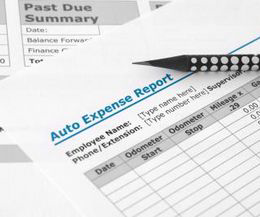Accounting
IRS Puts Up Roadblocks for Business Car Deductions
The IRS strictly limits deductions for vehicles used for business driving under the so-called luxury car rules. But that’s not the most upsetting part to many taxpayers. It’s the notion that the “luxury car” limits apply to vehicles costing well under $20,000. This is hardly what the average person considers to be a luxury car.
Sep. 07, 2014

[This is part of a series of articles on maximizing deductions
for travel and entertainment (T&E) expenses.]
The Internal Revenue Service strictly limits deductions for vehicles used for business driving under the so-called luxury car rules. But that’s not the most upsetting part to many taxpayers. It’s the notion that the “luxury car” limits apply to vehicles costing well under $20,000. This is hardly what the average person considers to be a luxury car.
For starters, if a taxpayer deducts the actual costs associated with business driving, he or can write off various expenses like a portion of oil and gas, repairs and insurance. In addition, you’re entitle to claim a depreciation allowance, based on the percentage of business use. Normally, the cost of the car may be depreciated over a six-year period for “five-year property.” But the luxury car rules limit the maximum depreciation deductions allowed for this purpose.
These limits are adjusted on an annual basis by the IRS (although they haven’t varied much recently except for a boost by “bonus depreciation” in applicable years). The updated limits for vehicles placed in service in 2014 are as follows:
|
Type of Vehicle |
2014 |
2015 |
2016 |
2017 and thereafter |
|
Passenger cars |
$3,160 |
$5,100 |
$3,050 |
$1,875 |
|
Light trucks and vans |
$3,460 |
$5,500 |
$3,350 |
$1,975 |
Therefore, if you acquire a car used for business driving in 2014 and use it 75% for business, your first-year deduction is limited to $2,370 (75% of $3,160) and so on. Under these rules, it’s rare for a business taxpayer to ever fully depreciate a vehicle before moving on to a newer model, especially if he or she truly drives a luxury car. .
Comparable rules apply to leased vehicles through “inclusion tables.” In short, there’s no IRS-approved way to steer around the limits.
There is, however, one gaping tax loophole. A vehicle with a gross vehicle weight rating (GVWR) over 6,000 pounds is exempt from the luxury car rules. This applies to more vehicles than you think, such as some of the heavy-duty Sports Utility Vehicles (SUVs) on the market. If it meets the GVWR test, you can claim a first-year write-off of up to $25,000 for a vehicle placed in service in 2014. Not a bad tax deal for business drivers.
Congress has threatened to close this tax loophole in the past and a proposal is likely to resurface as a revenue-raiser after the mind-term elections. But it’s unlikely that legislation curtailing or repealing this tax break would be enacted retroactively. Advise your business clients who are out shopping for SUVs to make hay while the sun shines.
